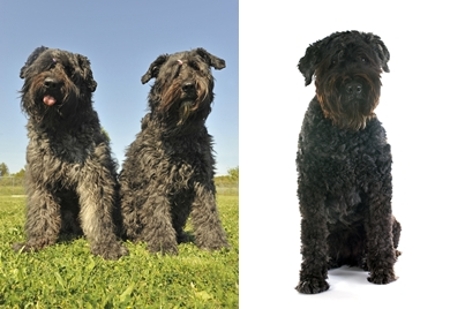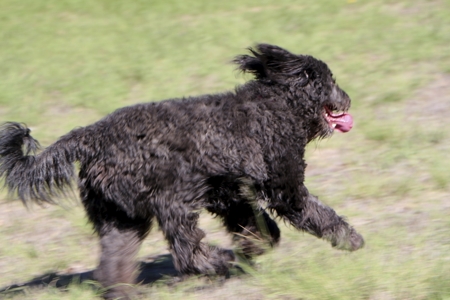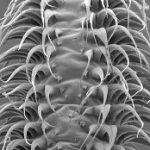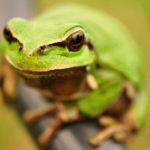The Bouvier des Flandres, originally bred in the Flanders region of Belgium, is a popular breed for families and dog enthusiasts. It has many likable qualities, including a protective side, a calm personality, and a distinctive appearance.
The Cow Herder of Flanders
Flanders is a region in Belgium famous for its food and its internationalism, and it is also the birthplace of the Bouvier des Flandres. In French, bouvier means cow herder, and this herding dog breed was originally bred for just that purpose. Today, the breed is well-known at dog shows and events, and its strong herding instincts make it a good guard dog. In addition, the Bouvier des Flandres has been a favorite pet breed among notables like Ronald Reagan.
Appearance
Height
Males : 24 to 29 in.
Females : 22 to 28 in.
Weight
Males : 36 to 54 kg
Females : 27 to 36 kg
Coat Colors – Black, gray brindle, fawn, pepper-and-salt
AKC Classification – Herding Group

Bouviers stand out from many other herding dogs on account of their unique combination of size and stature. In spite of their considerable size, they have a svelte appearance that is usually found in smaller dogs. They have a uniquely shaped head and a thick coat that is usually black or dark gray. The region of Flanders often has cold, wet weather conditions, so their thick coat was desirable for the climate. Their ears and tail are traditionally cropped for the sake of appearance, although this practice is now widely discouraged, and is illegal in many areas. Nevertheless, many people continue the practice in areas where it is permitted by law. If you see an adult Bouvier with pointy ears, chances are they have been clipped. These dogs were bred to be strong and energetic, rarely tiring, so they could perform herding duties and do other work throughout the day.
A Troubled History
The Bouvier des Flandres was originally bred by monks in the Flanders region. In Europe, standards for the breed began to appear around 1912, but Bouviers did not become internationally recognized until the 1960s. Part of the reason for this is that the Flanders region suffered heavy losses during both World Wars, each time resulting in a drastic reduction in Bouviers’ numbers, threatening the breed’s existence. The international standard for the breed was adopted in 1965.
Temperament
Today, Bouviers are beloved around the world for their friendly, calm temperament. These dogs are not easily spooked, and they are known for being easy to train. In addition, they are loyal, protective, and good with children. Their intimidating stature belies their pleasant and friendly nature. With proper training they make excellent watch dogs as well as guard dogs. Bouviers were purposely bred to possess traits like intelligence and complex control. They are fearless and enthusiastic. Another positive thing about Bouviers is that they pick up commands quickly, without many repetitions which makes them easy to train.
This is a great combination of traits for a family dog, but experts suggest that Bouviers be adopted at an early age to make sure that they feel like a part of the family. The same is true for keeping Bouviers around other pets – if they grow up around the other animals, they will do well.
Training
One major concern regarding this breed is the dominant nature of the dog. Bouviers can be very dominating if they are not trained properly. Right from an early age they need to be taught who is the pack leader or who is in charge. In the absence of a strong leader, the Bouvier will assume a dominating role, and a large, dominating Bouvier can be difficult to handle. Obedience training is a must at a fairly early age, and this breed is not recommended for people who are first-time dog owners, and who do not have experience with large and dominating breeds. Bouviers mature around the age of 3, before which the obedience training must ideally start.

Grooming and Exercise

Since the Bouvier des Flandres is an intelligent and family-oriented breed, they are relatively easy to care for. If the dog is going to be bred as a show dog, it will require more maintenance than normal. In particular, the double coat is thick and requires regular grooming and trimming. Those interested in showing a Bouvier should study the preferred cut. Additionally, Bouviers are not great city dogs because they need a lot of exercise and novelty. A brief walk once per day may not be enough to keep this breed from getting bored. It’s better to raise a Bouvier in an environment where the dog can be outside in a fenced area and can run around and get plenty of exercise. Bouviers tend to get bored easily, hence a variety of exercises like carting, tracking, agility training and herding are ideal to ensure that the Bouvier enjoys a happy and healthy life.










RSS